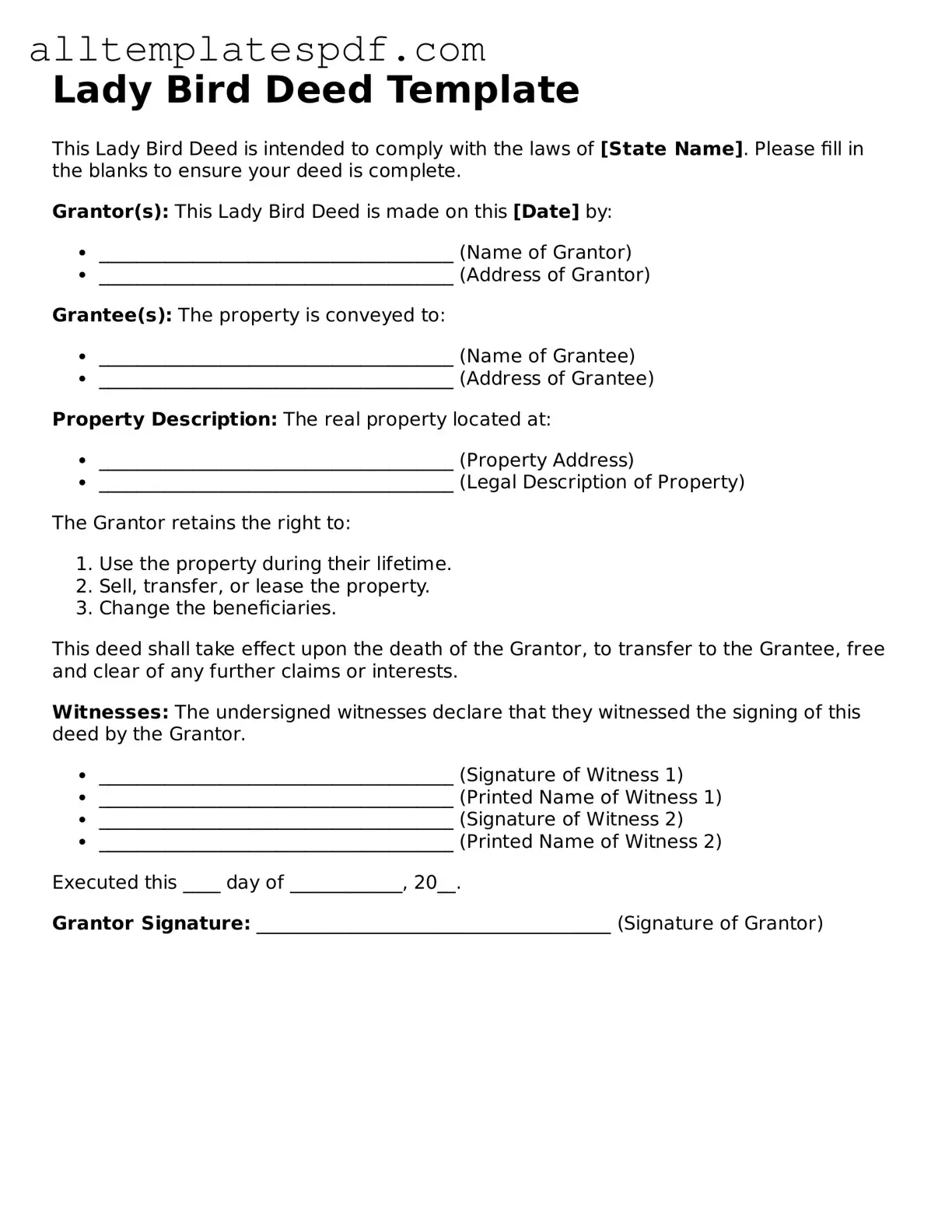When filling out a Lady Bird Deed form, many individuals make critical errors that can lead to complications down the line. One common mistake is failing to accurately identify the property being transferred. It is essential to provide a complete legal description of the property, not just the address. Omitting details can result in confusion and may invalidate the deed.
Another frequent error involves the designation of beneficiaries. People often neglect to clearly state who will inherit the property after their passing. This oversight can lead to disputes among family members and may require court intervention to resolve. Always ensure that the names and relationships of beneficiaries are clearly outlined.
Many individuals also overlook the need for proper signatures. The Lady Bird Deed must be signed by the grantor, and in some cases, witnesses may be required. Failing to follow the signature requirements can render the deed ineffective. Double-check the signing process to avoid this pitfall.
Additionally, some people mistakenly believe that the deed only needs to be filled out once. In reality, circumstances can change. It is crucial to review and update the deed if there are changes in beneficiaries or property details. Keeping the deed current helps prevent future legal challenges.
Another common mistake is not recording the deed with the appropriate county office. A Lady Bird Deed is not legally effective until it is properly recorded. Failing to file the deed can lead to issues with property transfer upon death. Ensure that the deed is submitted to the correct office promptly.
Lastly, individuals often neglect to seek legal advice when needed. While the Lady Bird Deed form may seem straightforward, the implications of errors can be significant. Consulting with a legal professional can provide clarity and help avoid costly mistakes.
